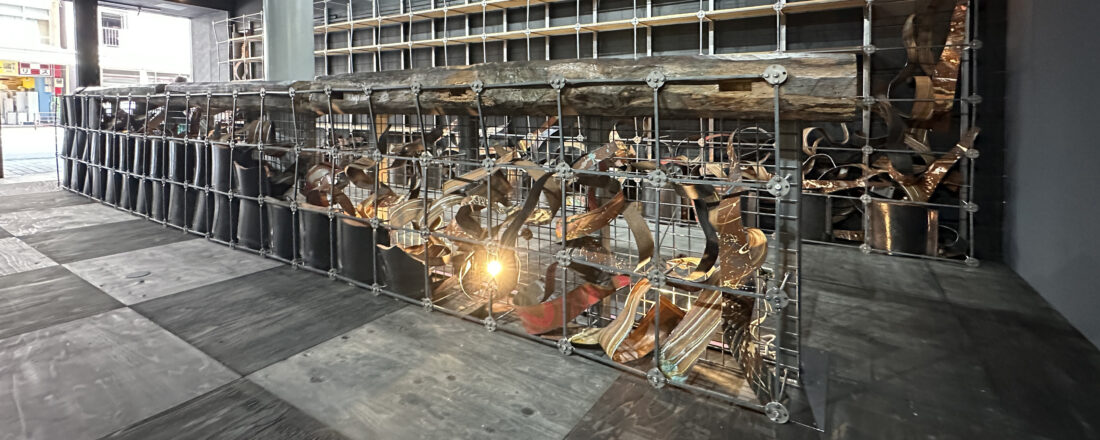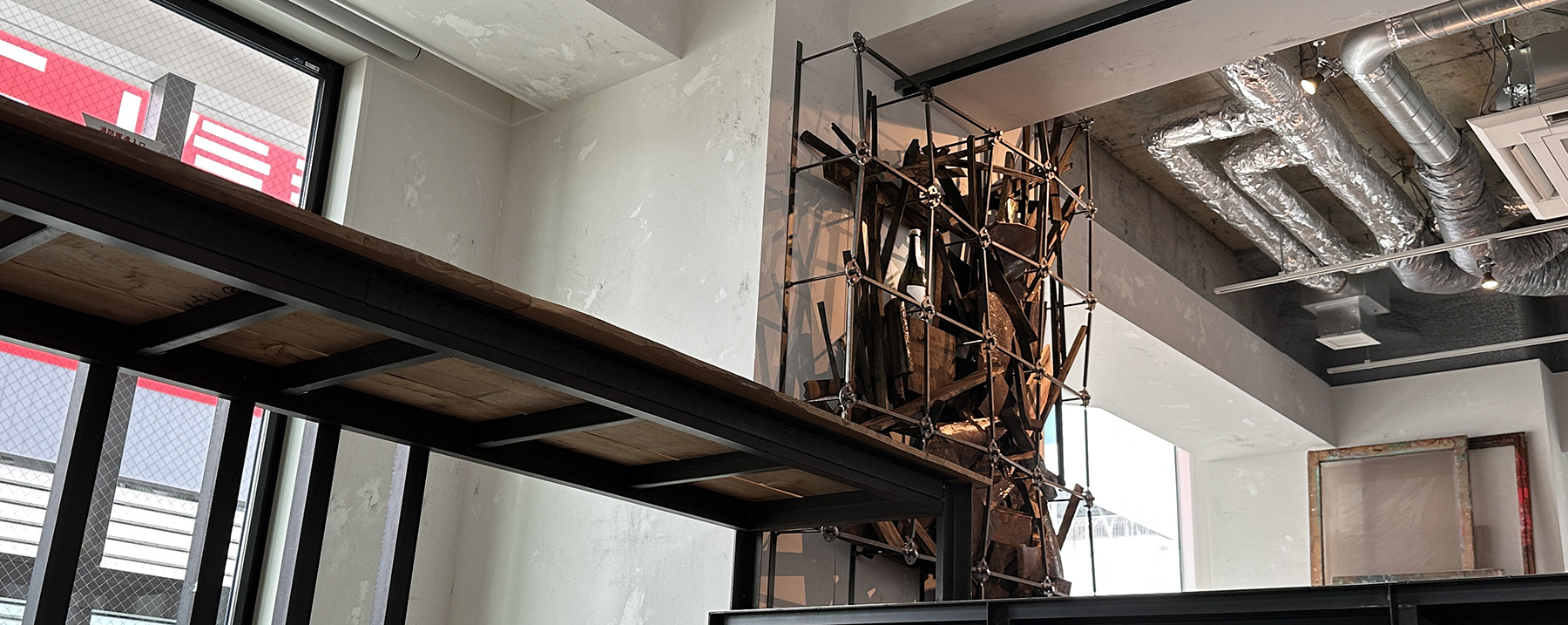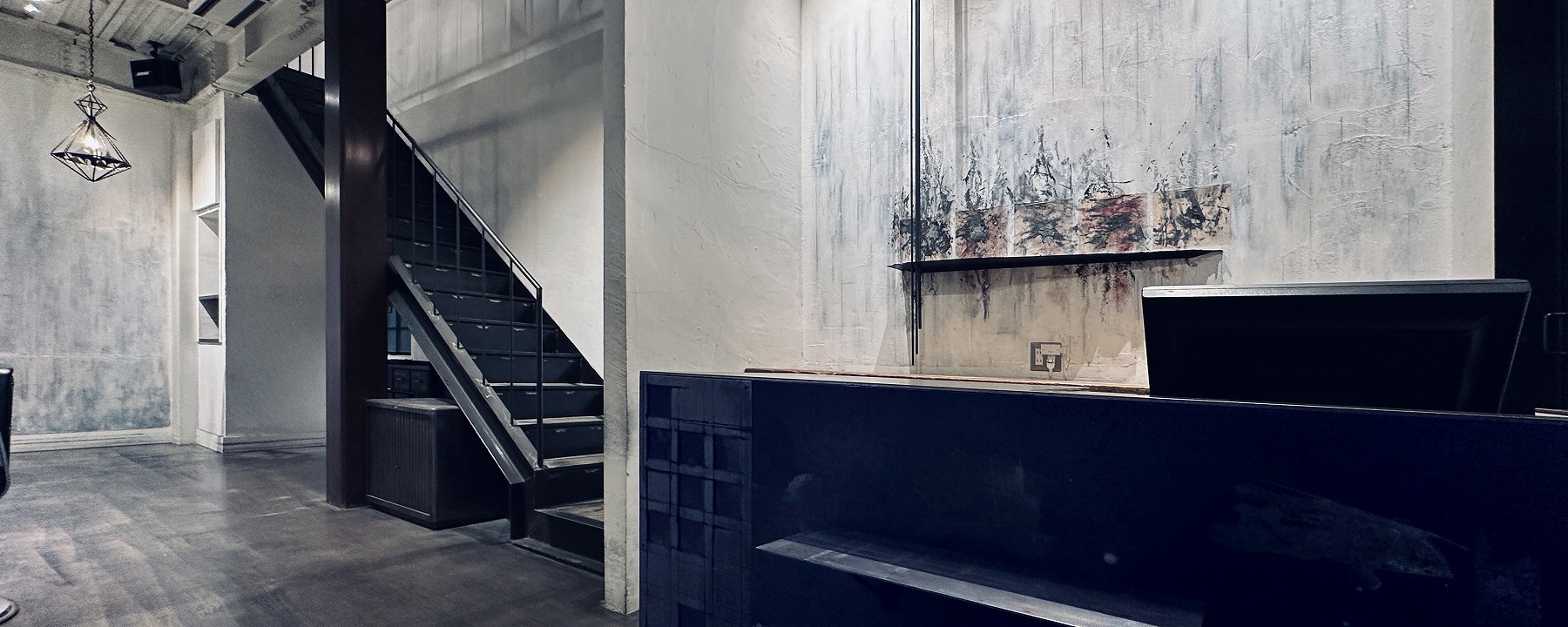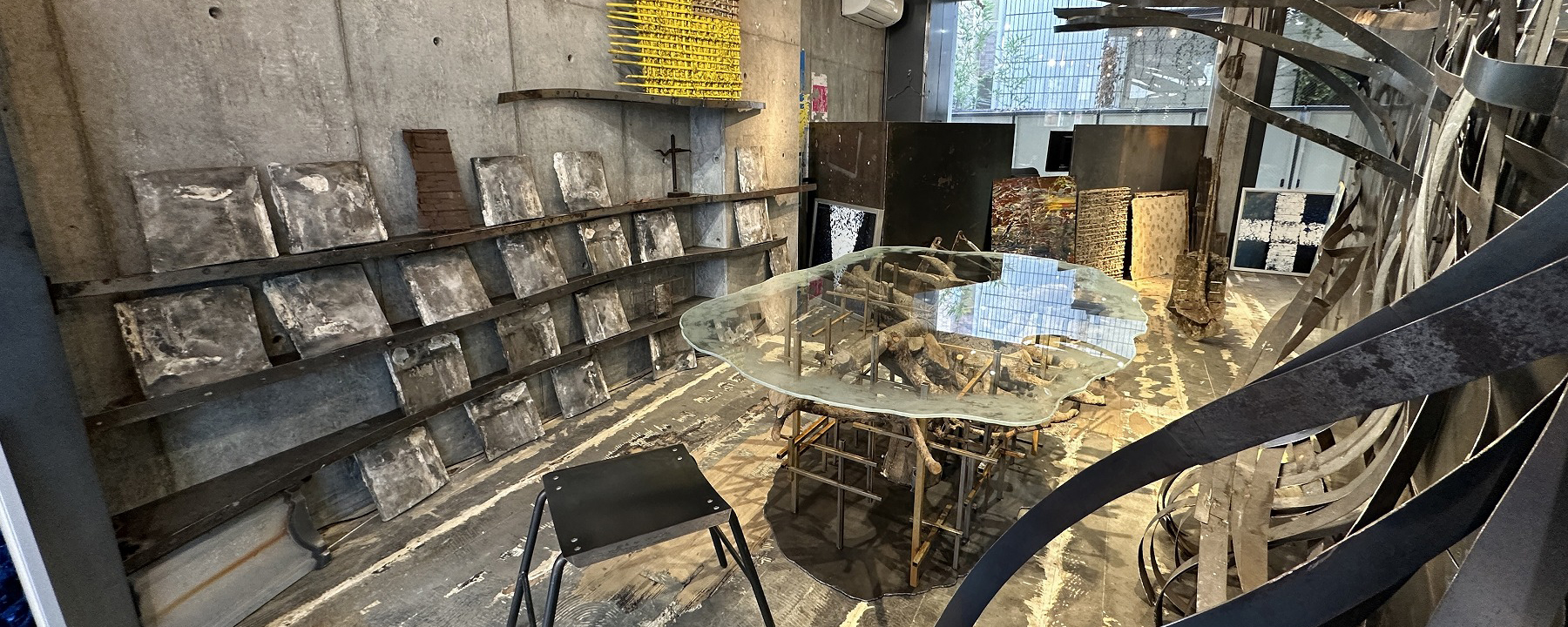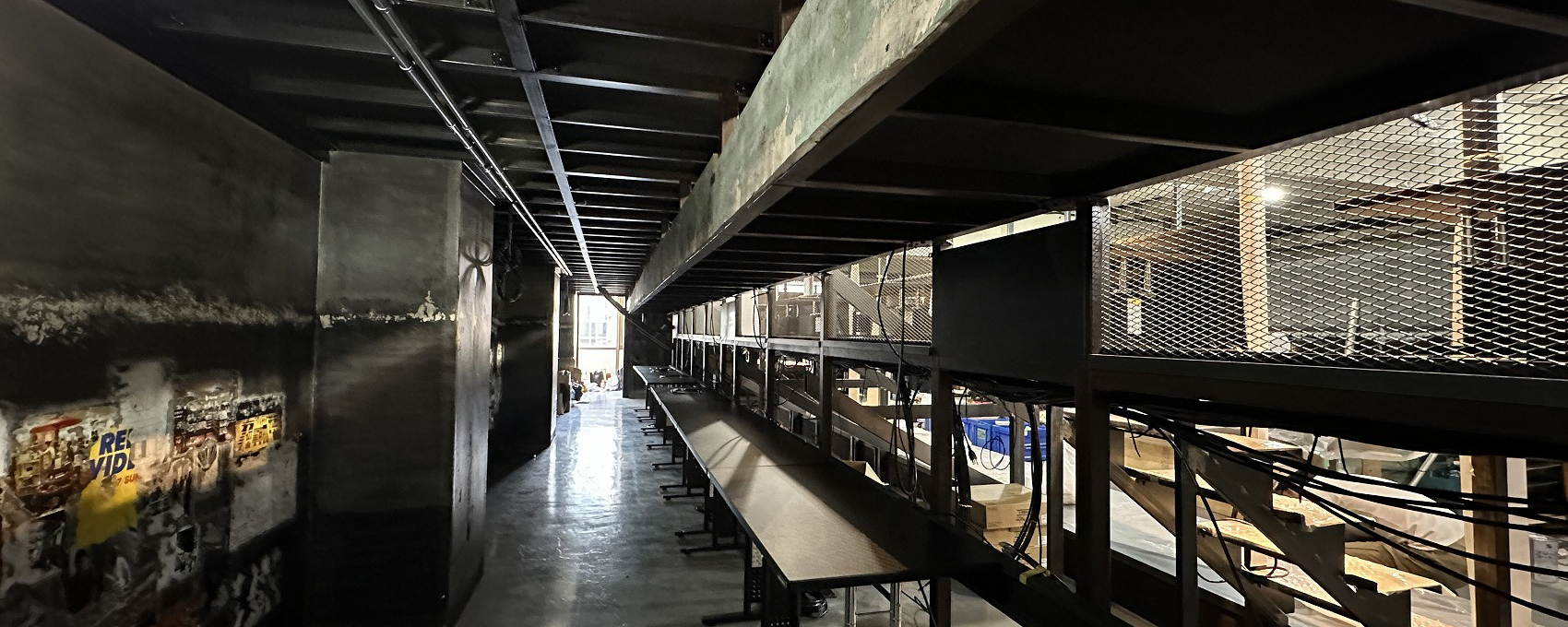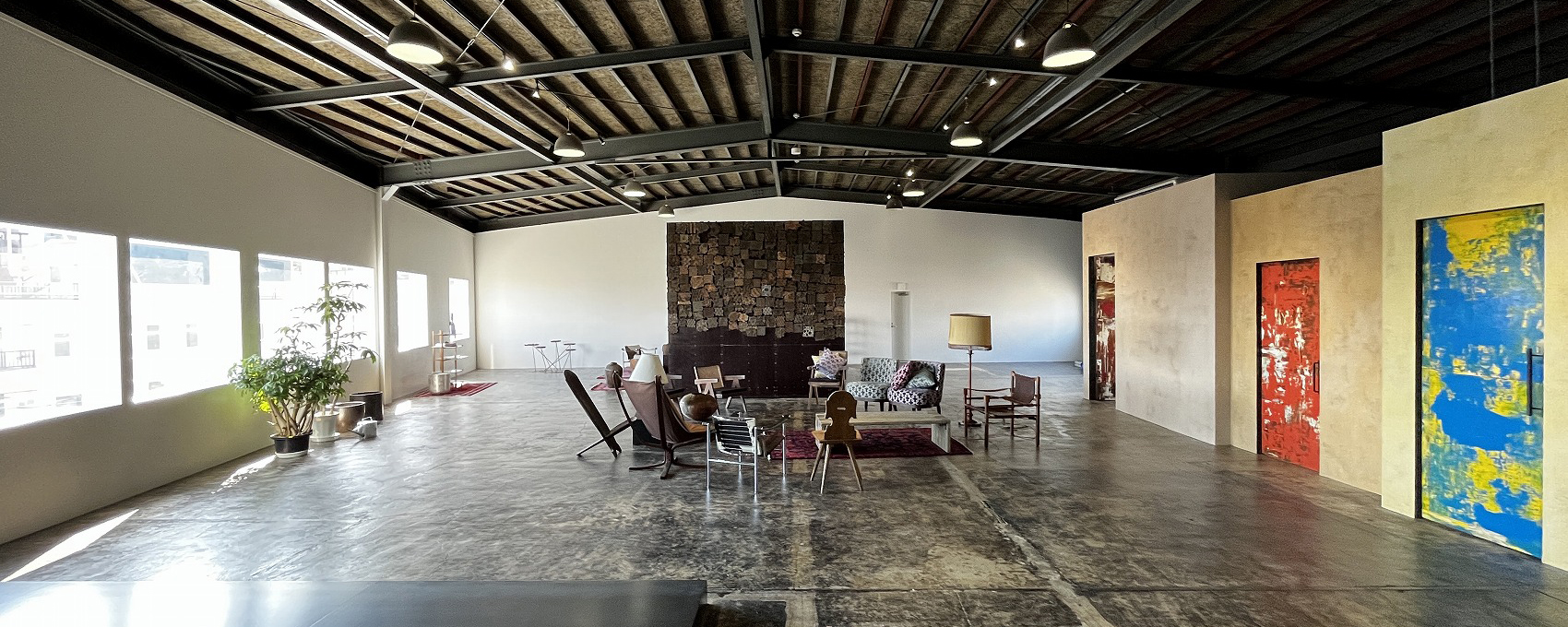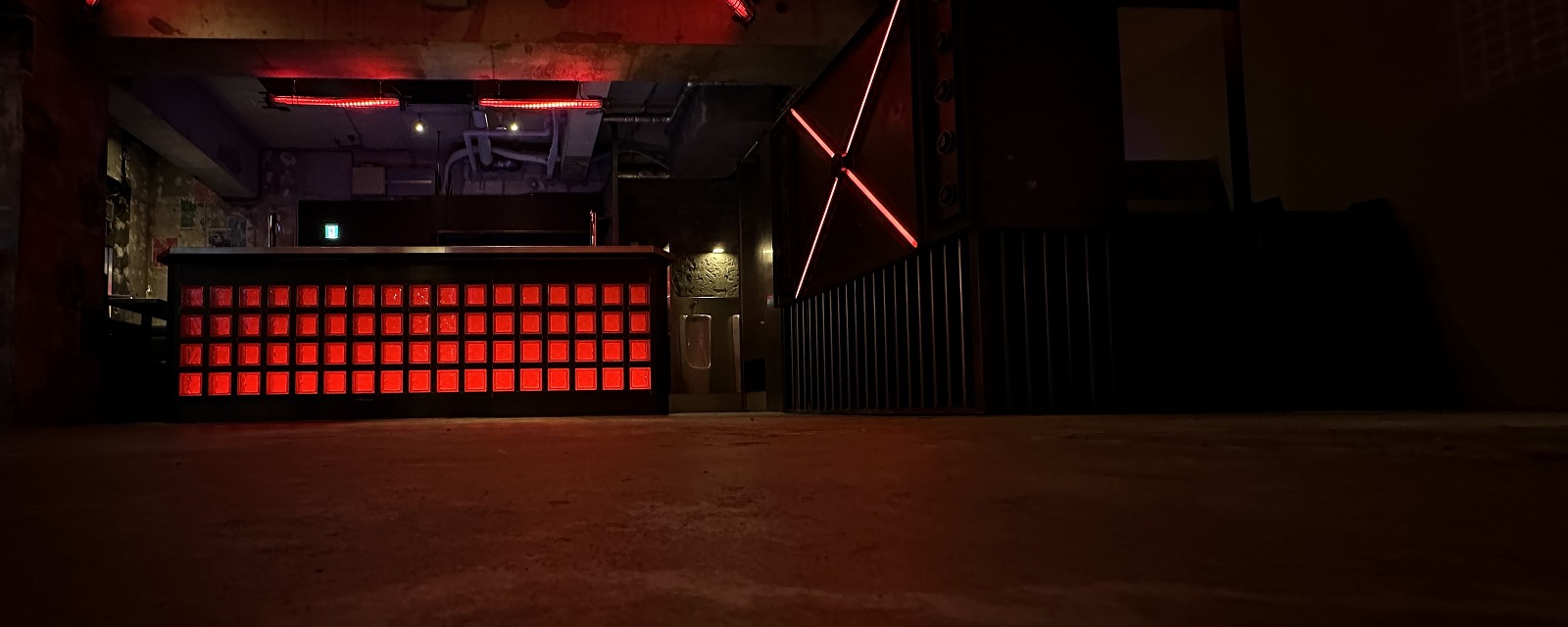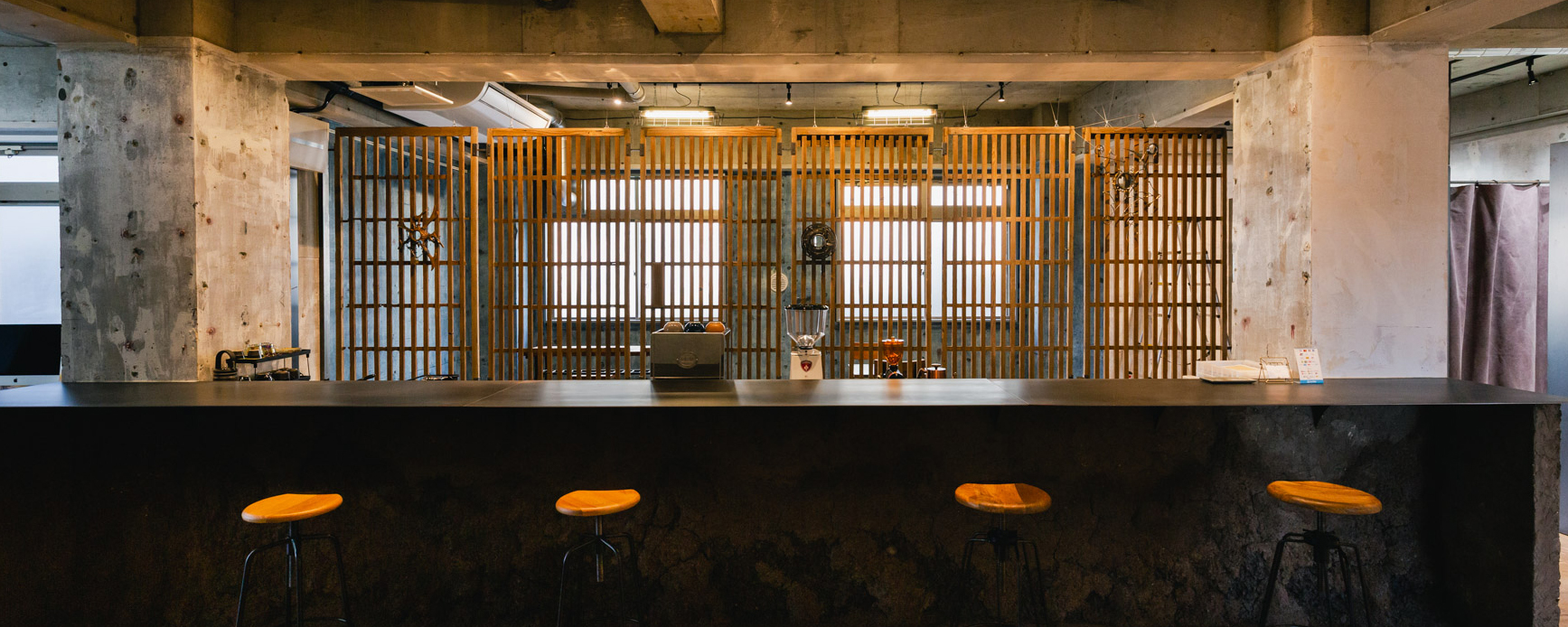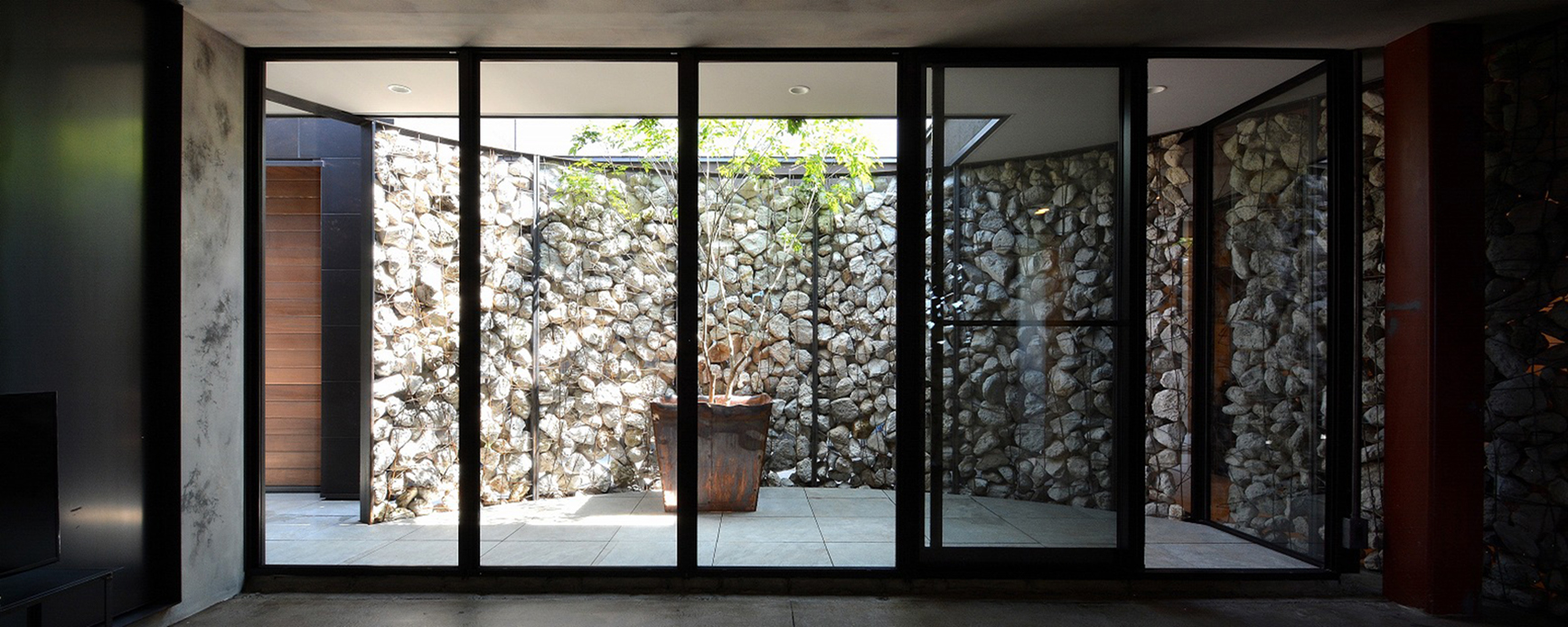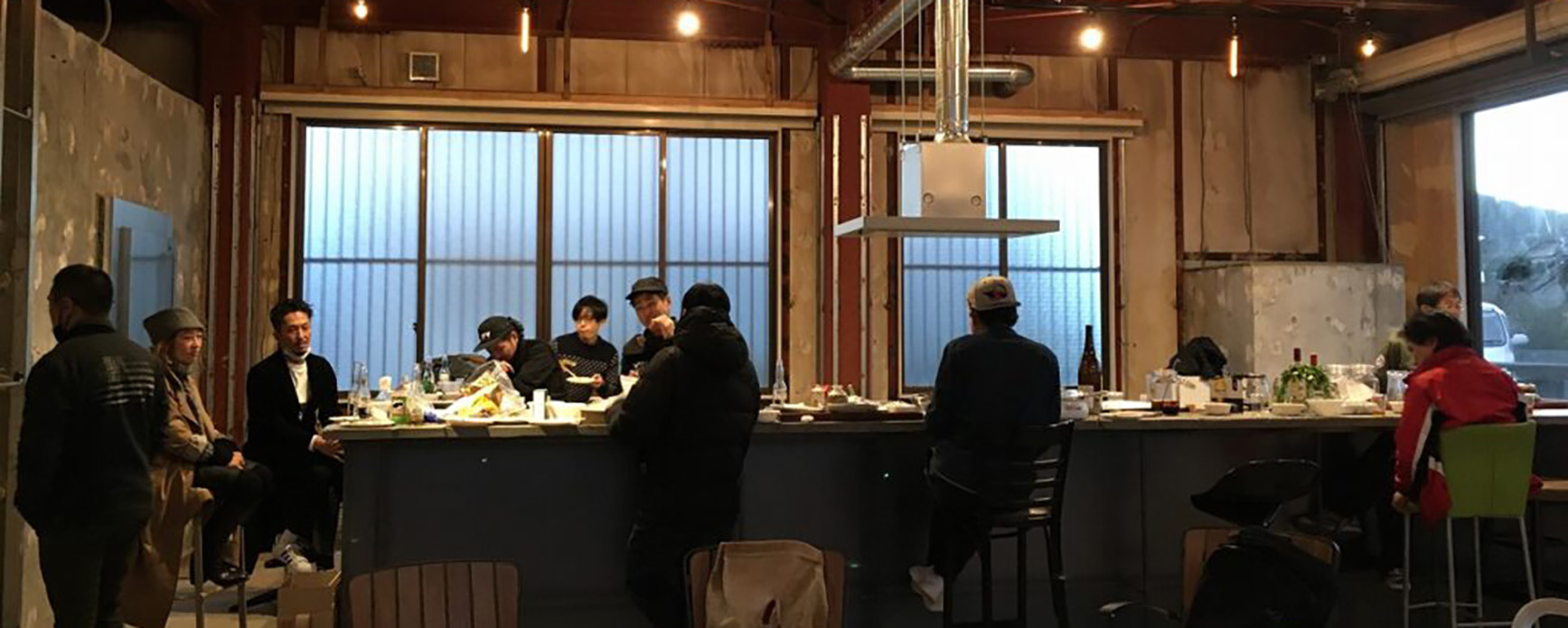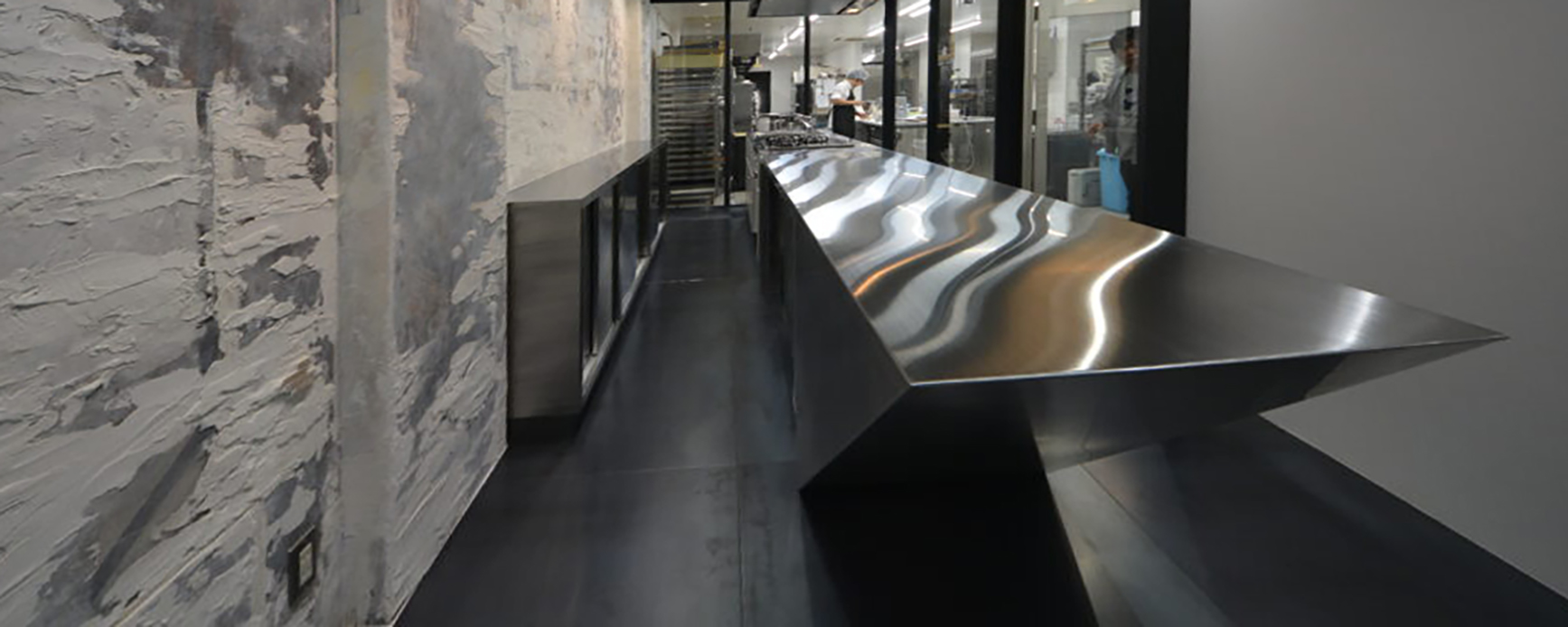The Art of Tea TOKYO
【能登地震で壊れたモノを未来へ活かすプロジェクト2】
手作業に徹した南部鉄器、茶器、茶葉の店舗空間。茶道文化を確立した利休の時代の空間に学び、SOTOCHIKU空間の創造に徹した。素材は、能登町宇出津からの瓦と木床材、千葉県鋸南町からの梁材と「ペンキのキセキ」鉄板を使用し、さらに入口には被害が甚大な珠洲市正院町の羽黒神社本殿の扉を使用した。まさに魂の宿る素材を使用させていただいた。茶道の魂を伝える空間になっているか?
そして、この空間は能登の人々を元気づける空間になりうるか?
【Project 2: Reviving things destroyed by the Noto earthquake for the future】
A shop space for handmade Nambu ironware, tea utensils, and tea leaves. Learning from the spaces of Rikyu’s time, when tea ceremony culture was established, we devoted ourselves to creating a SOTOCHIKU space. Materials used include roof tiles and wooden flooring from Ushitsu, Noto Town, beams from Kyonan Town, Chiba Prefecture, and iron plates with “Miracle of Paint.” Furthermore, for the entrance, we used the door from the main hall of Haguro Shrine in Shoin Town, Suzu City, which suffered extensive damage. We were truly allowed to use materials that dwell in soul. Is it a space that conveys the soul of tea ceremony?
And could this space become a place that inspires the people of Noto?
A manga artists room
【能登地震で壊れたモノを未来へ活かすプロジェクト1】
猫の通り道としての空間とは町の空間そのものだ。建物と建物の間には隙間が残り、それが主な猫の通り道になる。機能に従ってモノをつくりながら、むしろ勝手にできあがっていく残される部分こそが気ままに利用されていく自由な空間を目標とした。
能登地震で倒壊した明治元年創業の松波酒造から寄付された瓦や木片からは、酒造りに込められた想いが滲み出してくる。能登の祭りの火柱やキリコを想起させるカタチは負の混沌が広がる被災地の現状がスクラップ&ビルドされることなく正の混沌へと転換する可能性として立ち現れる。
【Project 1: Reviving things destroyed by the Noto earthquake for the future】
The space that serves as a cat’s passage is the space of the town itself. Gaps remain between buildings, and these become the main cat passages. While creating things according to function, the goal was to create a free space that can be used freely, with the remaining areas forming on their own.
The roof tiles and pieces of wood donated by Matsunami Sake Brewery, founded in 1868 and destroyed by the Noto earthquake, exude the passion that went into sake brewing. The shapes, reminiscent of the fire pillars and kiriko lanterns of Noto festivals, suggest the possibility of transforming the current negative chaos in the disaster-stricken areas into positive chaos, rather than scrap and build.
BONBON CLINIC
エレベータを降りた瞬間に正面に広がる地層の壁。そこには能登の黄色い土を溶いて塗りこんだ。自然の源を辿っていくと土に行き着く。もちろんそれは、美しさの源でもある。
The moment you step off the elevator, you are greeted by a geological wall. It is made from dissolved yellow soil from Noto and painted over. If you trace the origins of nature, you will arrive at the soil. Of course, it is also the source of beauty.
ecru
工場の廃墟の美しさは時間という自然が為した美しさだが、
その美しさはその場所でつくる行為がひたすら繰り返されたことによってもたらされたともいえる。ぼくらは白い壁に線を引き、それをまた薄い白で覆う。この行為を最初の描いた線が遠くへ消えていくまで繰り返した。
その壁からは時間を感じられるだろうか?
The beauty of the abandoned factory is a beauty created by the natural process of time,
but it can also be said that this beauty was brought about by the repeated act of creating in that place. We drew lines on the white wall, then covered them with a thin layer of white. We repeated this process until the original lines disappeared into the distance.
Can you sense time through that wall?
The canal
西麻布交差点は6000年程前はいくつかの運河が交差する海の底であり、現在も強大で不気味なエネルギーを発し続けている。新しい文化が湧き出るのはそのような場所からだ。2隻の泥舟を浮かべて、その歴史を今に伝える。
About 6,000 years ago, Nishi-Azabu Crossing was the bottom of the sea where several canals intersected, and even today it continues to emit a powerful, eerie energy. It is from such places that new cultures emerge. Two muddy boats float here, conveying that history to the present.
SOTOCHIKU showroom&office
表参道にSOTOCHIKUショールームをオープン。ここで「生まれて初めて見るモノ」に出会えることを願ってつくられた。一対一で向かい合えることこそ、心が自由であることだ。そして、ここはGRIDFRAMEのオフィスでもある。ぼくらは、オフィスの一角には必ずこのような「自由になれる空間」が必要だと思っている。
The SOTOCHIKU showroom opened in Omotesando. It was created in the hope that people would encounter “things they’ve never seen before in their lives.” Being able to interact one-on-one is what it means to have freedom of mind. This is also the GRIDFRAME office. We believe that every office needs a “space where you can be free” like this.
hair&nail HACO+
日本人美容師がロンドンで始めた美容室を世界展開。表参道の地下階の古いコンクリートブロックに囲まれた空間の記憶された時間を新たな空間へ持ち込むことでずっと前からそこに在ったような落ち着きを感じる店舗に。
A Japanese hairdresser started a hair salon in London and is now expanding it globally. By bringing the memories of the space surrounded by old concrete blocks in the basement of Omotesando into a new space, the store has a calming feel as if it has been there for a long time.
HANGOUT esports
76年の歴史を持つ文房具販売の会社の新規事業である。戦後まもなく小笠原諸島から蒲田へ移住された先代がこの会社を興して以来、蒲田の文化的な生活向上のために尽くしてこられた、という歴史の上に、このスポーツの最先端の事業がある。その歴史を体感するエリアにSOTOCHIKUの手法を用いた。
This is a new business venture for a stationery retailer with a 76-year history. The company was founded by its predecessor, who emigrated to Kamata from the Ogasawara Islands shortly after the war, and has since dedicated itself to improving the cultural life of Kamata. This cutting-edge sports business is built on this history. The SOTOCHIKU method was used in an area where you can experience that history.
WAGAYA Cafe
古い着物を素材としてさまざまな商品をつくる施設にカフェを併設した。着物の帯が川のように、ベンチになったりゲートになったり棚になったりしながら空間を巡る。川の流れをモチーフとして鉄に傷を入れて海辺の町で錆を育てる・・・。
A cafe has been added to a facility that uses old kimonos to create a variety of products. The obi sashes of the kimonos move through the space like a river, becoming benches, gates, and shelves. Scratches are made in the iron, using the motif of a flowing river, to allow rust to grow in the seaside town.
No X9Z STUDIO
写真家・宅間國博さんから「写真と言葉を自由に使用してもよい」という許可をいただいた写真集「ペンキのキセキ」。ぼくたちはSOTOCHIKUに「ペンキのキセキ」と名付けるシリーズをつくりたいと考えた。
Photographer Kunihiro Takuma gave us permission to use his photographs and words freely in the photo collection “Miracle of Paint.” We wanted to create a series for SOTOCHIKU called “Miracle of Paint.”
club ICON
古いコンクリートの壁に貼られた紙は、剥がされたり破られたりしているうちに、そこにプリントされた被写体は、この世からどんどん遠ざかっていくようだ。それが消えそうになると、むしろぼくらはそこから体温を感じ始める。
As the paper stuck to the old concrete wall is peeled off and torn, the subjects printed on it seem to become increasingly distant from this world. As they seem to disappear, we begin to feel their body heat.
STUDIO ZEFF
100年の時を重ねた旧養蚕農家の格子戸(ソトチク素材)が伝えるものに向き合うカウンター。それに対するレスポンスを空間全体に広げていく。藍染めによる特殊塗装で仕上げた壁、クロカワ鉄とソイルセメントのカウンター、・・・。
The counter faces the message conveyed by the lattice doors (made of outdoor materials) of a 100-year-old former silkworm farm. The response to this message spreads throughout the space. The walls are finished with a special indigo-dyed paint, and the counter is made of black iron and soil cement.
K HOUSE
中庭を中心とした構成の鉄骨造住宅のリノベーション。穴蔵に住みたいというご要望に対して、天然石を積み上げた原始的な円形壁に囲まれ、ソトチク素材を取り入れた、自分の中の「生きる力」を取り戻す空間をめざした。
This is a renovation of a steel-framed house with a central courtyard. In response to the client’s request to live in a cave, we aimed to create a space that would allow them to regain their inner “will to live” by incorporating outdoor materials and surrounded by primitive circular walls made of piled natural stone.
STUDIO MARLMARL
暗闇に光が射す。ソトチク素材は暗闇のような存在で、目の前に広がる世界とは別の世界へそれを見つめる人をいざなう。鉄工所の敷鉄板や土壁など要所にソトチク素材を用いて、重層的な時間がつくる壮大な空間を実現。
Light shines in the darkness. Sotochiku materials exist like darkness, inviting those who gaze upon them into a different world from the one unfolding before their eyes. By using Sotochiku materials in key areas such as the ironworks flooring and earthen walls, we have created a magnificent space where layered time is created.
SOTOCHIKU&89 unLtd.
千葉県安房郡鋸南町にソトチクのショールーム兼カフェ(通称パクチー銀行)。この町はソトチク素材の宝庫であり、朽ちかけた存在に、未来を見つけるという作業が始まっている。
Sotochiku’s showroom and cafe (commonly known as Pakchi Bank) is located in Kyonan Town, Awa District, Chiba Prefecture. This town is a treasure trove of Sotochiku materials, and work has begun to find a future for these decaying materials.
Silk Pudding Kitchen STUDIO
移転前の建物はやがて解体される。その前に、その外壁のタイルを剝がし、新しい場所へ持ち込み、空間づくりの素材として生かす。こうして、記憶は受け継がれていくことができるだろうか?
The building before the relocation will eventually be demolished. Before that happens, the tiles from the exterior walls will be removed and brought to the new location, where they will be used as materials to create the space. Will this be how memories can be passed on?

